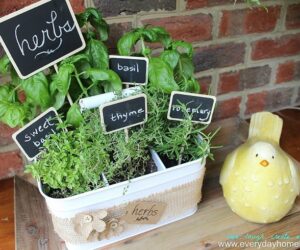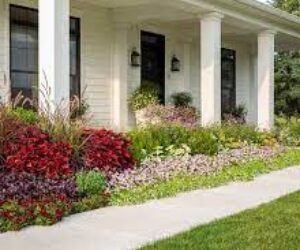Compost is the most important ingredient to add to your garden. By composting, we add life to the soil in our garden. But the benefits don’t stop here – composting improves drainage and creates good soil structure, which is essential for successful gardening. And the best part is that composting is easy, cheap, and totally doable in your own home and yard.
You will be surprised to learn all the ways you can make compost. Think about composting as recycling food scraps, yard trimmings, eggshells, etc. It is a process that is beneficial to the environment as well. By composting, we reduce the landfill waste, and we skip all those harmful fertilizers filled with chemicals.
We are happy to say that composting is becoming a habit among gardeners. This is very much so because composting is quite simple. You only need to know a few principles, and nature does the rest. Just read these TOP 10 things to know about home composting, and you will instantly become a composting expert.
Decide on Indoor or Outdoor Compost
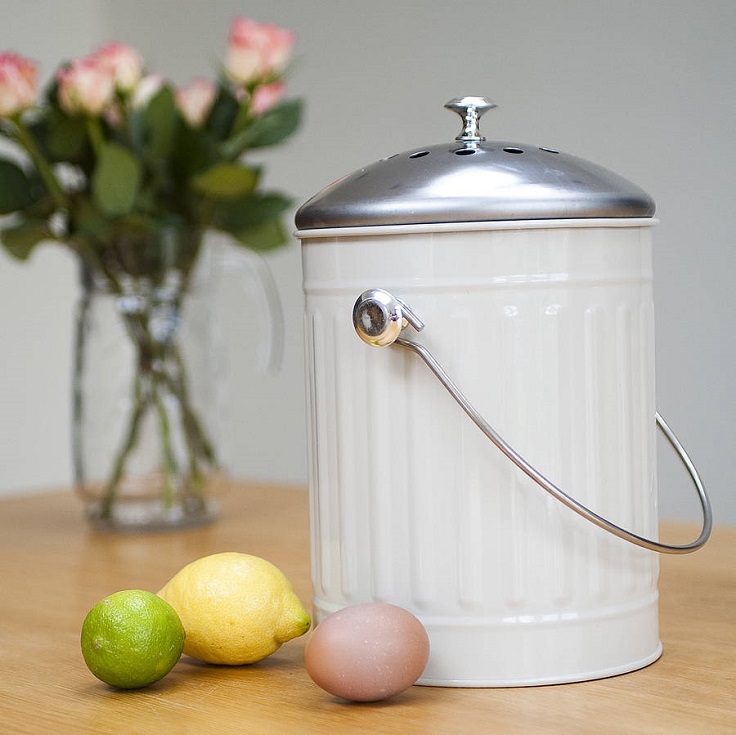
photo via notonthehighstreet.com
You are thinking about creating compost yourself, and you don’t know where to start. Well, first, you will have to decide whether you want to do indoor, outdoor composting, or maybe even both. Space is not an issue; you can compost even if you live in an apartment without a ground garden. You need the right tools, which can be found in any chain stores or garden centers. Keep in mind that there are separate tools for composting indoors and outdoors.
Choose the Right Compost Structures
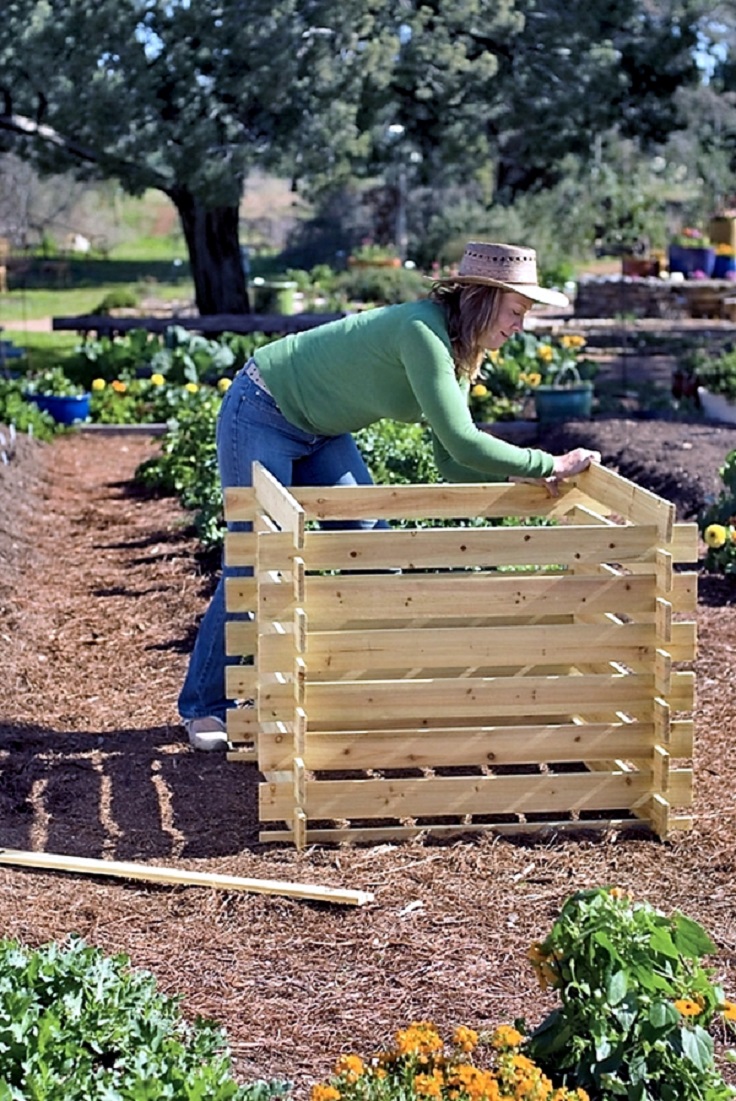
photo via ofdesign.net
They come in many shapes and sizes, so it is up to you to choose the perfect one for your space. Structures can be made of woven wire, snow fencing, old wooden pallets, concrete blocks or bricks, or a 55-gallon barrel. You can even use a garbage can for composting and have great results. Choose the right structure for you, and then place it in a shady spot near a water source with good air circulation. Another important thing is to place your compost bin in a place protected from direct winds. The size of your chosen structure should be at least 3′ x 3′ x 3.
Build Your Own Compost Pile
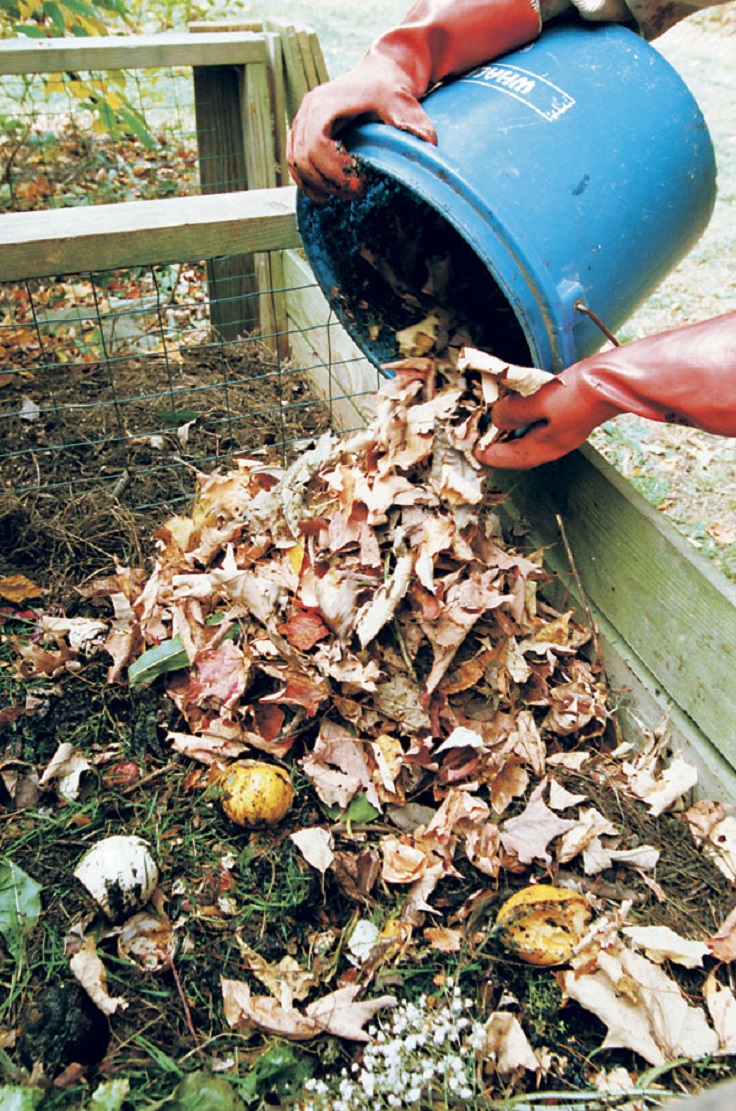
photo via blog.oregonlive.com
You can always build your own compost pile instead of buying a compost structure. Start your pile on bare earth by layering the materials (dry/moist). After several layers, start mixing them all. Of course, the pile needs maintenance to produce fine compost. Keep it slightly moist and turn it frequently to allow enough oxygen.
The Best Composting Materials
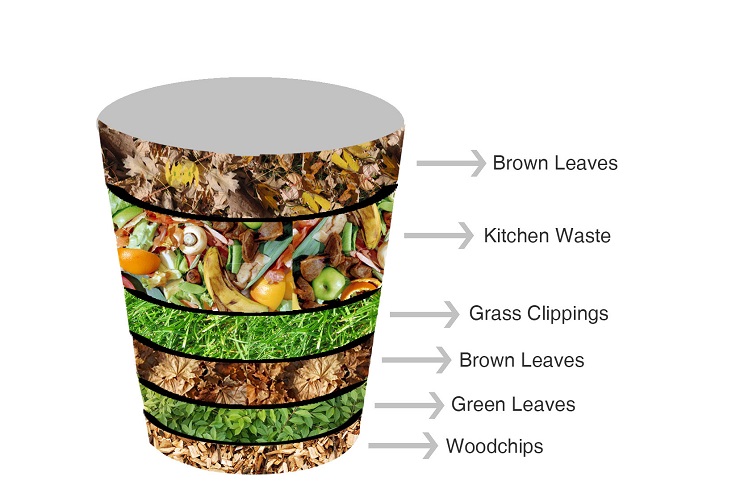
photo via theotherdada.wordpress.com
There are many materials you can use for composting, both in your kitchen and in your garden. For best results, you should balance brown materials rich in carbon and green materials that are nitrogen-based. 50/50 is the perfect ratio. Some of the best brown materials to use are eggshells, dried leaves, and coffee grinds, along with green materials like fruits and veggies scraps or fresh yard trimmings. Don’t use meat, processed foods, dairy, or diseased plants and weeds.
Just The Right Amount of Water
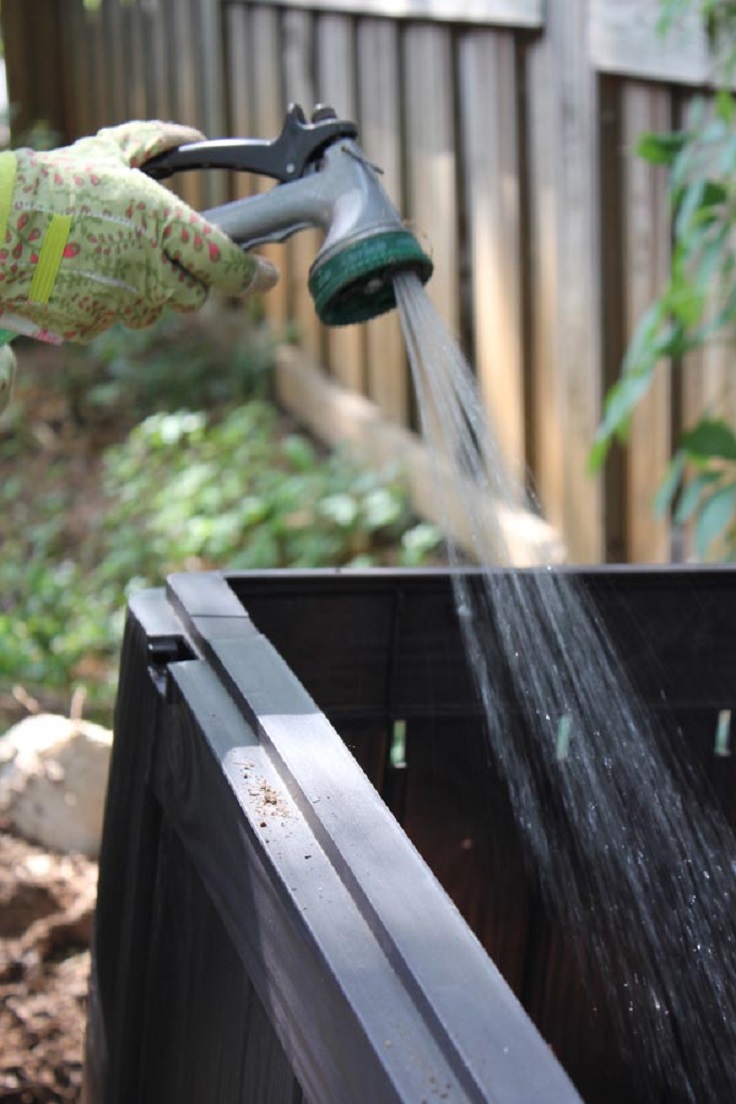
photo via ext.homedepot.com
Microbes are responsible for creating the compost, and these little things need water to work their magic. But how much water are we talking about? Too little water will kill them, and too much will turn your compost bin into a smelly pie. However, by adding green material, you are reducing the need for water. In general. you want your compost moist but not wet. Rain can be a problem so if you are getting a lot of rain you should probably build a roof over your bin.
Aeration is an important
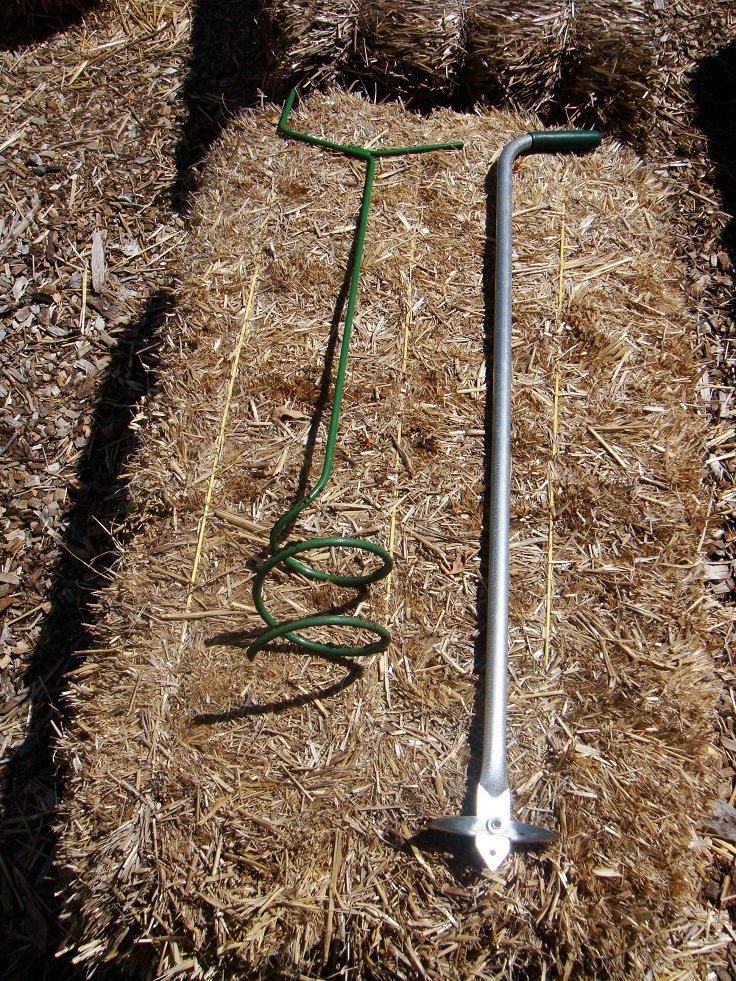
photo via solanacompost.wordpress.com
Just like water, oxygen is important for successful composting. To provide proper ventilation, you just need to turn the pile, often using a pitchfork or spade. There is a special tool called a compost aerator that adds effectively and is easy to use. You should also turn the contents by moving the less decomposed material on the edges to the middle of the pile to heat up.
Use a Composting Thermometer
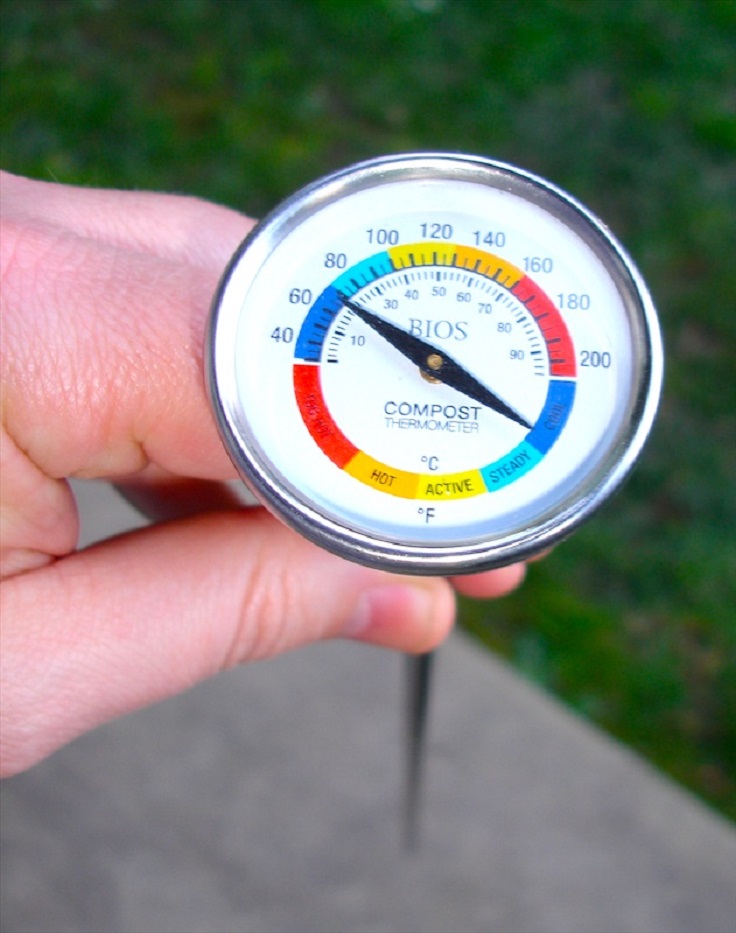
photo via megaminifarm.com
140-160˚F is the perfect temperature of a well-working compost pile. This is the ideal temperature that kills weeds and diseases. To maintain a proper temperature, we recommend you use a composting thermometer. Using it, you will have a general idea of when is the time to turn your compost, add more materials or more water, and finally, when the compost is ready to use.
How to Properly Add The Materials
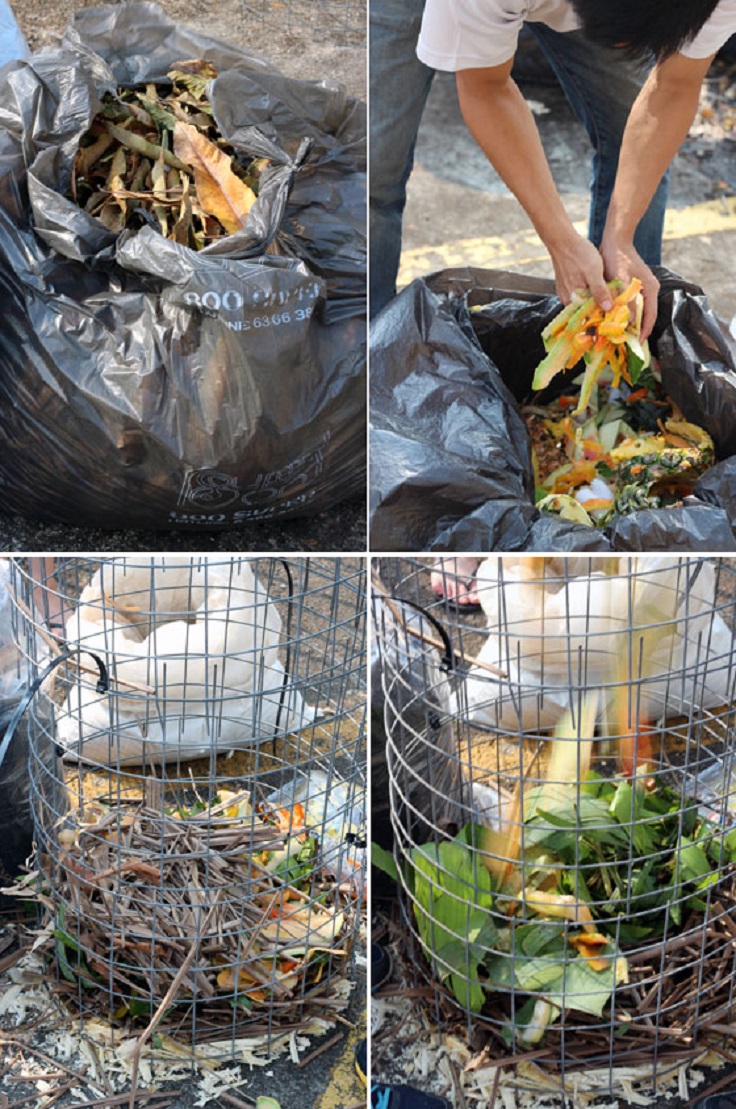
photo via littlegreendot.com
The first rule – don’t squash the materials. This will squeeze out the much-needed air that microbes use to create compost. Fill your bin with a mixture of brown ingredients and greens. Strategically mixing will speed up composting. It is all about balance. For example, after you have added your vegetable scraps throw some leaves on top. This will speed up the composting and reduce the smell and make your compost bin less attractive to critters. We also recommend shredding the scarps you put in your bin, as this will also speed up the whole process.
When is Your Compost Ready?
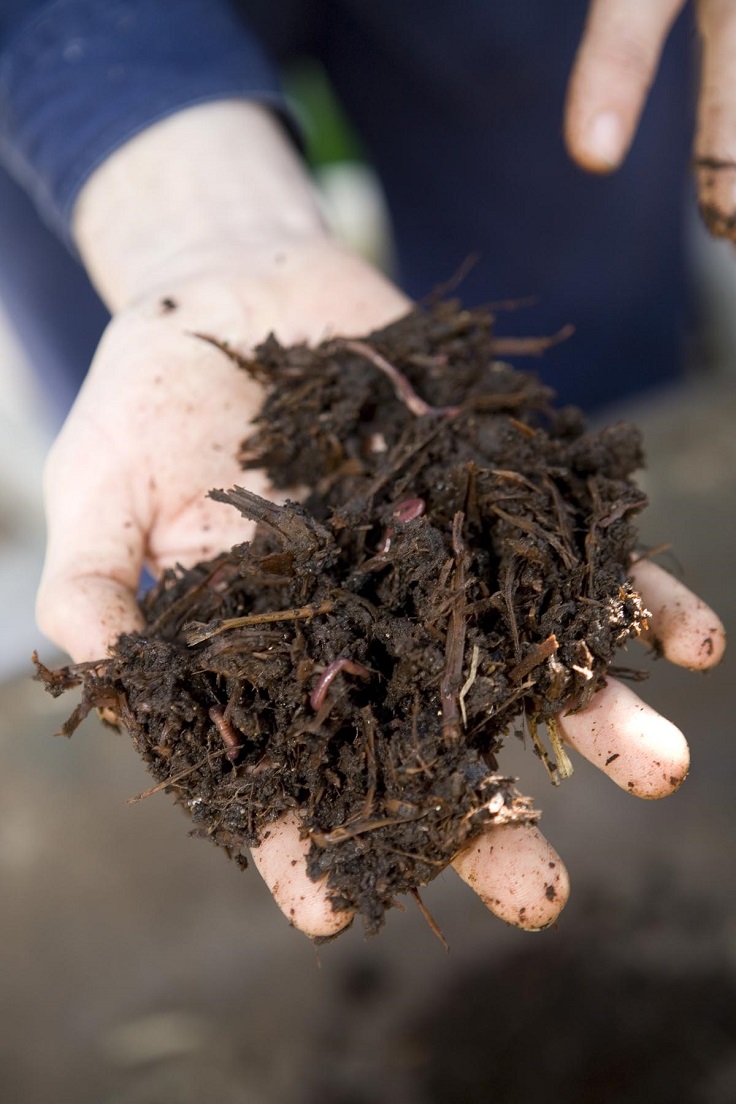
photo via healthyharvest.com.au
Composting is a process that can last from three months to an entire year. It all depends on the conditions mentioned above. Dark brown, earthy-smelling, and crumbly is the common look for a ready to use compost. Don’t worry if your compost shrinks during the process. This is because a compost pile heats up it breaks down and takes up less space. If you are not sure if your compost is ready to use, make a little test. Take some and place it in a bag. Keep it there for a week, then open the bag and smell the compost. If it smells like Ammonia, it is still not ready to use.
How to Use The Compost in Your Garden
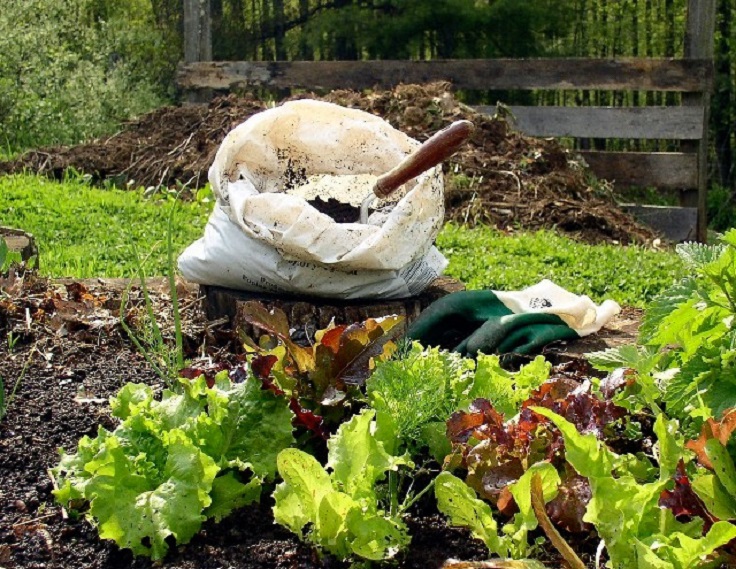
photo via bonnieplants.com
You can use your compost for anything in your home and garden. It is truly the “garden gold.” Add it to the soil mix when planting seeds, seedlings or use it for nourishing established plants. In the garden, spread it in a layer over the soil. Water will carry nutrients down into the soil. This is called top-dressing. Use it also as a layer in garden beds and no dig gardens. When you dig your garden beds, add compost. You can even plant directly in it. But keep to tomatoes, pumpkins, and similar plants that can thrive well directly in compost. Keep in mind that compost acts as a pH buffer, so plants are less dependent on a specific soil pH. By using compost around your yard in any or all of these ways, you’ll notice healthier plants, soil, and a greener lawn.

![Top 10 Tips on How To Grow Aloe Vera [Step-by-Step]](https://www.topinspired.com/wp-content/uploads/2017/08/3-4-300x250.jpg)
